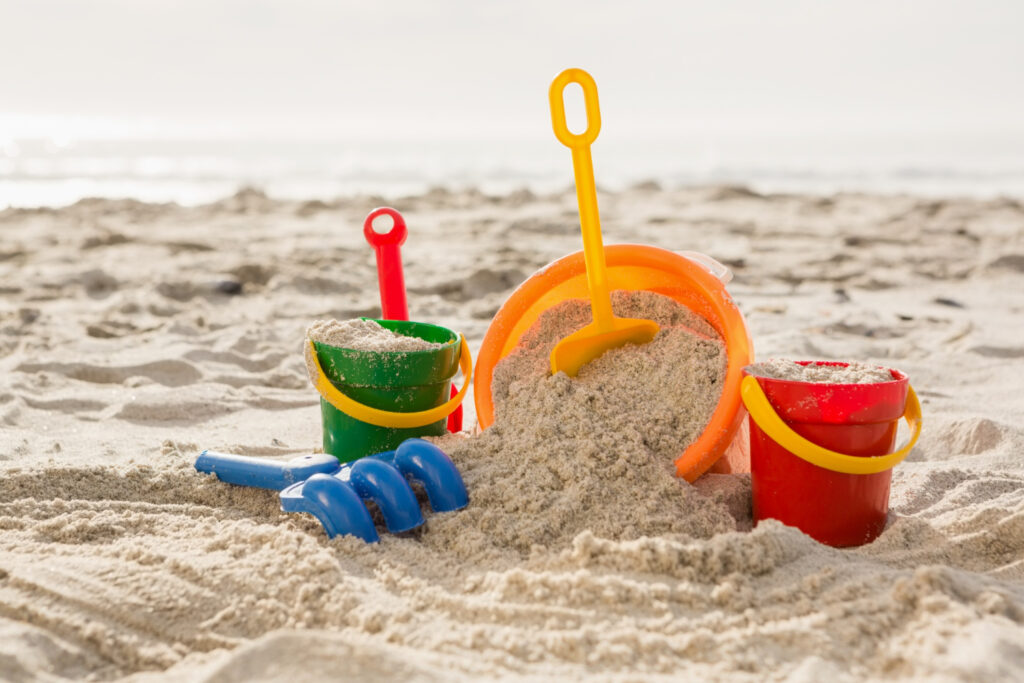This comprehensive guide provides insights into the import procedures for children’s toys in Vietnam, including the classification of HS codes, taxation policies, and quality regulations
Are you planning to import children’s toys for business in Vietnam? Are you looking for a reliable logistics provider to import children’s toys into Vietnam? Do you want to know the current import tax rate for children’s toys? Is there an import tax incentive for children’s toys? What are the state regulations for children’s toys? How is the import procedure for children’s toys?
1. HS Code for Children’s Toys
Children’s toys are classified under HS code Chapter 95: Toys, games, and sports requisites; parts and accessories thereof, under group 9503, as detailed below:
- 9503 Tricycles, scooters, pedal cars, and similar wheeled toys; dolls’ carriages; dolls; other toys; reduced-size (“scale”) models and similar recreational models, working or not; puzzles.
- 95030010 Tricycles, scooters, pedal cars, and similar wheeled toys; dolls’ carriages; Dolls.
- 95030021 Dolls, whether or not dressed.
- 95030022 Clothing and accessories for dolls; shoes and hats.
- 95030029 Other types.
- 95030030 Toy electric trains, including tracks, signals, and other accessories therefor.
- 95030040 Reduced-size (“scale”) models and similar recreational models, working or not.
- 95030050 Other construction sets and constructional toys, of all kinds other than plastic.
- 95030060 Toys representing animals or non-human creatures.
- 95030070 Puzzles; Other.
- 95030091 Toys that assemble or disassemble into blocks or pieces, numbers, letters, or non-human shapes; letter sets; word-making and spelling toys; picture-making toys; counting toys (abacuses); toy sewing machines; toy typewriters.
- 95030092 Skipping ropes.
- 95030093 Marbles.
- 95030094 Other toys, of rubber.
- 95030099 Other kinds.
(This article focuses on items within group 9503 mentioned above and does not apply to electronic toys such as toy grabber machines, fish shooting games, etc., which fall under group 9504 or multi-functional outdoor play equipment, which falls under group 9506.)

2. Considerations When Importing Children’s Toys
> When determining the HS code for a product, it should be based on the actual nature, composition, and structure of the imported goods. According to current regulations, the HS code is applied to the actual goods at the time of import, based on the catalog, technical documents (if any), and/or customs inspection by the Customs Inspection Bureau. The actual customs inspection results and the results of the Customs Inspection Bureau determine the legal basis for applying the code to imported goods.
> When importing children’s toys into Vietnam, importers are required to pay import tax and value-added tax (VAT). The VAT rate for children’s toys is 10%. The import VAT on children’s toys is 5% of the assessed import value. Import taxes on children’s toys are divided into two main categories: regular import tax and special import tax incentives (depending on the origin according to trade agreements).
> Import tax rates for children’s toys vary from 10% to 20% of the assessed import value (depending on the HS code for each type of toy, which determines the specific import tax rate). Special import tax rates for children’s toys depend on the type of toy and its origin. To determine the specific rate, the importing company must provide information such as the type of children’s toy (including toys with wheels, dolls, model toys, assembly toys, electronic toys, plastic toys, etc.) and the origin of the imported children’s toy (e.g., China, Japan, ASEAN countries). Especially, it is essential to determine whether the exporting party can provide a Certificate of Origin (C/O Form of Preference) or not. Based on this information, the HS Code for the imported children’s toy can be determined. For example, some types of children’s toys imported from:
- China: Import tax for toys with HS codes in group 9503 is eligible for a 0% import tax rate with Form E.
- Japan: Import tax for toys with HS codes in group 9503 is eligible for 0%-6% import tax rate with Form VJ or Form AJ.
- ASEAN countries in Southeast Asia such as Thailand, Malaysia, etc.: Import tax for toys with HS codes in group 9503 is eligible for 0% import tax rate with Form D from ASEAN countries.
> According to current regulations, children’s toys do not belong to the list of prohibited export or import goods, so companies can carry out the import procedures as required.

However, brand-new children’s toys that are 100% new are not on the list of prohibited imports or require import licenses, but according to Decision 3810, they must undergo quality inspection and meet the standards when imported.
3. Import Policy for Children’s Toys
Children’s toys fall under the cultural management sector of the Ministry of Culture, Sports and Tourism. According to the regulations in Circular No. 28/2014/TT-BVHTTDL dated December 31, 2014, and amended by Circular No. 26/2018/TT-BVHTTDL dated September 11, 2018 of the Minister of Culture, Sports and Tourism, imported children’s toys must meet the following conditions:
- They must be brand-new, never used products.
- They must meet quality standards in accordance with the national technical standards for the safety of children’s toys as specified in Circular No. 09/2019/TT-BKHCN of the Ministry of Science and Technology on national technical standards for the safety of children’s toys – QCVN 3:2009/BKHCN.
- They must have content, form, style, and usage features that do not harm education, personal development, or endanger the health of children, and do not violate the regulations stated in Article 6 of this Circular.
Imported children’s toys must undergo state quality inspection, as regulated by the competent inspection authority. Regulations on the quality inspection of imported goods for customs clearance are in accordance with Circular No. 07/2017/TT-BKHCN dated June 16, 2017, and Decision No. 2711/QĐ-BKHCN of the Ministry of Science and Technology.
4. Customs Import Procedure for Children’s Toys
Due to the policies mentioned above, when conducting customs import procedures for children’s toys, in addition to the standard procedures for goods, you need to register for state quality inspection of imported goods with the Standards, Metrology and Quality Directorate and notify the customs authority through the Registration Certificate.
Typical customs import documentation includes:
- Commercial Invoice
- Packing List
- Bill of Lading
- Certificate of Origin (for those wishing to benefit from special import tax incentives)
- Other relevant documents (if applicable)
- Quality inspection results
- Children’s toy product labels
Imported goods must have proper labeling in accordance with current regulations, including the following information:
- Product name
- Name and address of the organization or individual responsible for the product
- Country of origin
- Other relevant information as per the nature of the goods
In addition to general labeling requirements, Decree No. 43/2017/ND-CP dated April 14, 2017, stipulates specific requirements for labeling children’s toy products (Article 24, Appendix I), including:
- Ingredients
- Technical specifications
- Warning information
- Usage instructions
- Year of manufacture
Furthermore, children’s toy labels must also include all warnings and usage instructions as required by the corresponding standards under the TCVN 6238 (ISO 8124) series.
For more articles from Unicorn Global: https://unicornw.com/news-media/
Reference: https://doortodoorviet.com/thu-tuc-nhap-khau-do-choi-tre-em/

